formerly eScholarship Editions


|
|
|
|
Your request for similar items found 20 book(s). | Modify Search | Displaying 1 - 20 of 20 book(s) | |
| 1. | 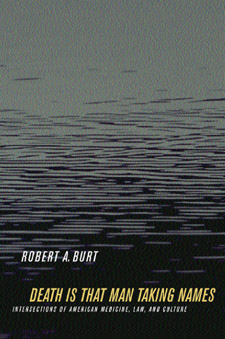 | Title: Death is that man taking names: intersections of American medicine, law, and culture Author: Burt, Robert 1939- Published: University of California Press, 2002 Subjects: Law | Health Care | History of Medicine | Ethics | Religion Publisher's Description: The American culture of death changed radically in the 1970s. For terminal illnesses, hidden decisions by physicians were rejected in favor of rational self-control by patients asserting their "right to die" - initially by refusing medical treatment and more recently by physician-assisted suicide. This new claim rested on two seemingly irrefutable propositions: first, that death can be a positive good for individuals whose suffering has become intolerable; and second, that death is an inevitable and therefore morally neutral biological event. Death Is That Man Taking Names suggests, however, that a contrary attitude persists in our culture - that death is inherently evil, not just in practical but also in moral terms. The new ethos of rational self-control cannot refute but can only unsuccessfully try to suppress this contrary attitude. The inevitable failure of this suppressive effort provokes ambivalence and clouds rational judgment in many people's minds and paradoxically leads to inflictions of terrible suffering on terminally ill people. Judicial reforms in the 1970s of abortion and capital punishment were driven by similarly high valuations of rationality and public decision-making - rejecting physician control over abortion in favor of individual self-control by pregnant women and subjecting unsupervised jury decisions for capital punishment to supposed rationally guided supervision by judges. These reforms also attempt to suppress persistently ambivalent attitudes toward death, and are therefore prone to inflicting unjustified suffering on pregnant women and death-sentenced prisoners. In this profound and subtle account of psychological and social forces underlying American cultural attitudes toward death, Robert A. Burt maintains that unacknowledged ambivalence is likely to undermine the beneficent goals of post-1970s reforms and harm the very people these changes were intended to help. [brief] Similar Items |
| 2. | 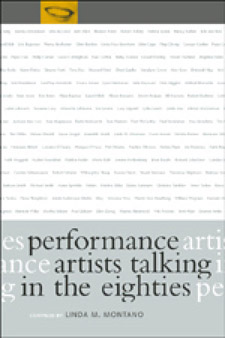 | Title: Performance artists talking in the eighties: sex, food, money/fame, ritual/death Author: Montano, Linda 1942- Published: University of California Press, 2001 Subjects: Art | Art History | Cinema and Performance Arts Publisher's Description: Performance artist Linda Montano, curious about the influence childhood experience has on adult work, invited other performance artists to consider how early events associated with sex, food, money/fame, or death/ritual resurfaced in their later work. The result is an original and compelling talking performance that documents the production of art in an important and often misunderstood community. Among the more than 100 artists Montano interviewed from 1979 to 1989 were John Cage, Suzanne Lacy, Faith Ringgold, Dick Higgins, Annie Sprinkle, Allan Kaprow, Meredith Monk, Eric Bogosian, Adrian Piper, Karen Finley, and Kim Jones. Her discussions with them focused on the relationship between art and life, history and memory, the individual and society, and the potential for individual and social change. The interviews highlight complex issues in performance art, including the role of identity in performer-audience relationships and art as an exploration of everyday conventions rather than a demonstration of virtuosity. [brief] Similar Items |
| 3. | 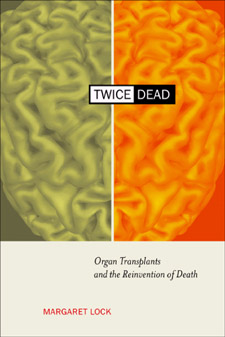 | Title: Twice dead: organ transplants and the reinvention of death Author: Lock, Margaret M Published: University of California Press, 2001 Subjects: Anthropology | Medical Anthropology | Cultural Anthropology | Ethics | Sociology | Sociology | Ethics | Sociology | Ethnic Studies | Ethnic Studies Publisher's Description: Tales about organ transplants appear in mythology and folk stories, and surface in documents from medieval times, but only during the past twenty years has medical knowledge and technology been sufficiently advanced for surgeons to perform thousands of transplants each year. In the majority of cases individuals diagnosed as "brain dead" are the source of the organs without which transplants could not take place. In this compelling and provocative examination, Margaret Lock traces the discourse over the past thirty years that contributed to the locating of a new criterion of death in the brain, and its routinization in clinical practice in North America. She compares this situation with that in Japan where, despite the availability of the necessary technology and expertise, brain death was legally recognized only in 1997, and then under limited and contested circumstances. Twice Dead explores the cultural, historical, political, and clinical reasons for the ready acceptance of the new criterion of death in North America and its rejection, until recently, in Japan, with the result that organ transplantation has been severely restricted in that country. This incisive and timely discussion demonstrates that death is not self-evident, that the space between life and death is historically and culturally constructed, fluid, multiple, and open to dispute. In addition to an analysis of that professional literature on and popular representations of the subject, Lock draws on extensive interviews conducted over ten years with physicians working in intensive care units, transplant surgeons, organ recipients, donor families, members of the general public in both Japan and North America, and political activists in Japan opposed to the recognition of brain death. By showing that death can never be understood merely as a biological event, and that cultural, medical, legal, and political dimensions are inevitably implicated in the invention of brain death, Twice Dead confronts one of the most troubling questions of our era. [brief] Similar Items |
| 4. | 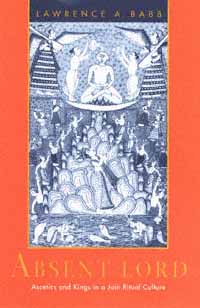 | Title: Absent lord: ascetics and kings in a Jain ritual culture Author: Babb, Lawrence A Published: University of California Press, 1996 Subjects: Religion | Asian Studies | Anthropology Publisher's Description: What does it mean to worship beings that one believes are completely indifferent to, and entirely beyond the reach of, any form of worship whatsoever? How would such a relationship with sacred beings affect the religious life of a community? Using these questions as his point of departure, Lawrence A. Babb explores the ritual culture of image-worshipping Svetambar Jains of the western Indian states of Gujarat and Rajasthan.Jainism traces its lineages back to the ninth century B.C.E. and is, along with Buddhism, the only surviving example of India's ancient non-Vedic religious traditions. It is known and celebrated for its systematic practice of non-violence and for the intense rigor of the asceticism it promotes. A unique aspect of Babb's study is his linking of the Jain tradition to the social identity of existing Jain communities.Babb concludes by showing that Jain ritual culture can be seen as a variation on pan-Indian ritual patterns. In illuminating this little-known religious tradition, he demonstrates that divine "absence" can be as rich as divine "presence" in its possibilities for informing a religious response to the cosmos. [brief] Similar Items |
| 5. | 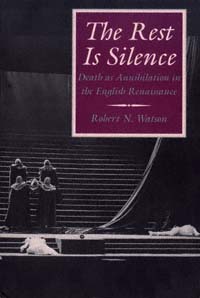 | Title: The rest is silence: death as annihilation in the English Renaissance Author: Watson, Robert N Published: University of California Press, 1995 Subjects: Literature | English Literature | Literary Theory and Criticism | Renaissance Literature Publisher's Description: How did the fear of death coexist with the promise of Christian afterlife in the culture and literature of the English Renaissance? Robert Watson exposes a sharp edge of blasphemous protest against mortality that runs through revenge plays such as The Spanish Tragedy and Hamlet , and through plays of procreation such as Measure for Measure and Macbeth . Tactics of denial appear in the vengefulness that John Donne directs toward female bodies for failing to bestow immortality, and in the promise of renewal that George Herbert sets against the threat of closure.Placing these literary manifestations in the context of specific Jacobean deathbed crises and modern cultural distortions, Watson explores the psychological roots and political consequences of denying that death permanently erases sensation and consciousness. [brief] Similar Items |
| 6. | 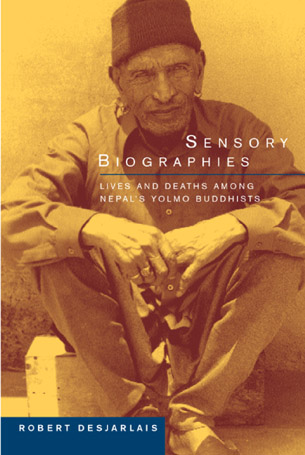 | Title: Sensory biographies: lives and deaths among Nepal's Yolmo Buddhists Author: Desjarlais, Robert R Published: University of California Press, 2003 Subjects: Anthropology | Cultural Anthropology | Buddhism | Aging Publisher's Description: Robert Desjarlais's graceful ethnography explores the life histories of two Yolmo elders, focusing on how particular sensory orientations and modalities have contributed to the making and the telling of their lives. These two are a woman in her late eighties known as Kisang Omu and a Buddhist priest in his mid-eighties known as Ghang Lama, members of an ethnically Tibetan Buddhist people whose ancestors have lived for three centuries or so along the upper ridges of the Yolmo Valley in north central Nepal. It was clear through their many conversations that both individuals perceived themselves as nearing death, and both were quite willing to share their thoughts about death and dying. The difference between the two was remarkable, however, in that Ghang Lama's life had been dominated by motifs of vision, whereas Kisang Omu's accounts of her life largely involved a "theatre of voices." Desjarlais offers a fresh and readable inquiry into how people's ways of sensing the world contribute to how they live and how they recollect their lives. [brief] Similar Items |
| 7. | 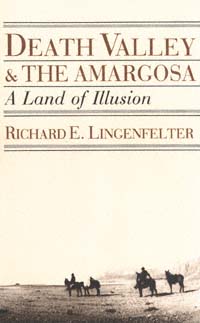 | Title: Death Valley & the Amargosa: a land of illusion Author: Lingenfelter, Richard E Published: University of California Press, 1988 Subjects: History | California and the West | United States History Similar Items |
| 8. | 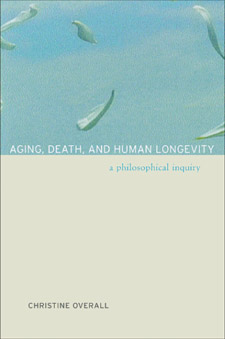 | Title: Aging, death, and human longevity: a philosophical inquiry Author: Overall, Christine 1949- Published: University of California Press, 2003 Subjects: Philosophy | Ethics | Public Policy Publisher's Description: With the help of medicine and technology we are living longer than ever before. As human life spans have increased, the moral and political issues surrounding longevity have become more complex. Should we desire to live as long as possible? What are the social ramifications of longer lives? How does a longer life span change the way we think about the value of our lives and about death and dying? Christine Overall offers a clear and intelligent discussion of the philosophical and cultural issues surrounding this difficult and often emotionally charged issue. Her book is unique in its comprehensive presentation and evaluation of the arguments - both ancient and contemporary - for and against prolonging life. It also proposes a progressive social policy for responding to dramatic increases in life expectancy. Writing from a feminist perspective, Overall highlights the ways that our biases about race, class, and gender have affected our views of elderly people and longevity, and her policy recommendations represent an effort to overcome these biases. She also covers the arguments surrounding the question of the "duty to die" and includes a provocative discussion of immortality. After judiciously weighing the benefits and the risks of prolonging human life, Overall persuasively concludes that the length of life does matter and that its duration can make a difference to the quality and value of our lives. Her book will be an essential guide as we consider our social responsibilities, the meaning of human life, and the prospects of living longer. [brief] Similar Items |
| 9. | 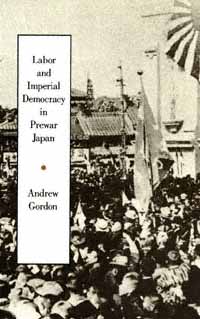 | Title: Labor and imperial democracy in prewar Japan Author: Gordon, Andrew 1952- Published: University of California Press, 1991 Subjects: Asian Studies | Japan | Politics | Asian History | Labor Studies Publisher's Description: Labor and Imperial Democracy in Prewar Japan examines the political role played by working men and women in prewar Tokyo and offers a reinterpretation of the broader dynamics of Japan's prewar political history. Gordon argues that such phenomena as riots, labor disputes, and union organizing can best be understood as part of an early twentieth-century movement for "imperial democracy" shaped by the nineteenth-century drive to promote capitalism and build a modern nation and empire. When the propertied, educated leaders of this movement gained a share of power in the 1920s, they disagreed on how far to go toward incorporating working men and women into an expanded body politic. For their part, workers became ambivalent toward working within the imperial democratic system. In this context, the intense polarization of laborers and owners during the Depression helped ultimately to destroy the legitimacy of imperial democracy.Gordon suggests that the thought and behavior of Japanese workers both reflected and furthered the intense concern with popular participation and national power that has marked Japan's modern history. He points to a post-World War II legacy for imperial democracy in both the organization of the working class movement and the popular willingness to see GNP growth as an index of national glory. Importantly, Gordon shows how historians might reconsider the roles of tenant farmers, students, and female activists, for example, in the rise and transformation of imperial democracy. [brief] Similar Items |
| 10. | 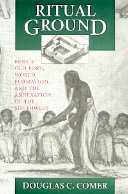 | Title: Ritual ground: Bent's Old Fort, world formation, and the annexation of the Southwest Author: Comer, Douglas C Published: University of California Press, 1996 Subjects: History | Californian and Western History | Cultural Anthropology | California and the West | United States History Publisher's Description: From about 1830 to 1849, Bent's Old Fort, located in present-day Colorado on the Mountain Branch of the Santa Fe Trail, was the largest trading post in the Southwest and the mountain-plains region. Although the raw enterprise and improvisation that characterized the American westward movement seem to have little to do with ritual, Douglas Comer argues that the fort grew and prospered because of ritual and that ritual shaped the subsequent history of the region to an astonishing extent.At Bent's Old Fort, rituals of trade, feasting, gaming, marriage, secret societies, and war, as well as the "calcified ritual" provided by the fort itself, brought together and restructured Anglo, Hispanic, and American Indian cultures. Comer sheds new light on this heretofore poorly understood period in American history, building at the same time a powerfully convincing case to demonstrate that the human world is made through ritual.Comer gives his narrative an anthropological and philosophical framework; the events at Bent's Old Fort provide a compelling example not only of "world formation" but of a world's tragic collapse, culminating in the Sand Creek massacre. He also calls attention to the reconstructed Bent's Old Fort on the site of the original. Here visitors reenact history, staff work out personal identities, and groups lobby for special versions of history by ritual recasting of the past as the present. [brief] Similar Items |
| 11. |  | Title: Imperial bedlam: institutions of madness in colonial southwest Nigeria Author: Sadowsky, Jonathan Hal Published: University of California Press, 1999 Subjects: African Studies | Psychology | African History | Medicine | Social Problems Publisher's Description: The colonial government of southern Nigeria began to use asylums to confine the allegedly insane in 1906. These asylums were administered by the British but confined Africans. Yet, as even many in the government recognized, insanity is a condition that shows cultural variation. Who decided the inmates were insane and how? This sophisticated historical study pursues these questions as it examines fascinating source material - writings by African patients in these institutions and the reports of officials, doctors, and others - to discuss the meaning of madness in Nigeria, the development of colonial psychiatry, and the connections between them. Jonathan Sadowsky's well-argued, concise study provides important new insights into the designation of madness across cultural and political frontiers. Imperial Bedlam follows the development of insane asylums from their origins in the nineteenth century to innovative treatment programs developed by Nigerian physicians during the transition to independence. Special attention is given to the writings of those considered "lunatics," a perspective relatively neglected in previous studies of psychiatric institutions in Africa and most other parts of the world. Imperial Bedlam shows how contradictions inherent in colonialism were articulated in both asylum policy and psychiatric theory. It argues that the processes of confinement, the labeling of insanity, and the symptoms of those so labeled reflected not only cultural difference but also political divides embedded in the colonial situation. Imperial Bedlam thus emphasizes not only the cultural background to madness but also its political and experiential dimensions. [brief] Similar Items |
| 12. | 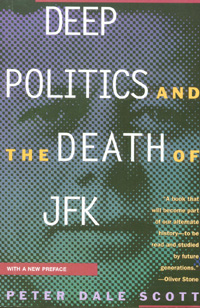 | Title: Deep politics and the death of JFK Author: Scott, Peter Dale Published: University of California Press, 1993 Subjects: History | Politics | Popular Culture | United States History | American Studies | Sociology Publisher's Description: Peter Dale Scott's meticulously documented investigation uncovers the secrets surrounding John F. Kennedy's assassination. Offering a wholly new perspective - that JFK's death was not just an isolated case, but rather a symptom of hidden processes - Scott examines the deep politics of early 1960s American international and domestic policies.Scott offers a disturbing analysis of the events surrounding Kennedy's death, and of the "structural defects" within the American government that allowed such a crime to occur and to go unpunished. In nuanced readings of both previously examined and newly available materials, he finds ample reason to doubt the prevailing interpretations of the assassination. He questions the lone assassin theory and the investigations undertaken by the House Committee on Assassinations, and unearths new connections between Oswald, Ruby, and corporate and law enforcement forces.Revisiting the controversy popularized in Oliver Stone's movie JFK, Scott probes the link between Kennedy's assassination and the escalation of the U.S. commitment in Vietnam that followed two days later. He contends that Kennedy's plans to withdraw troops from Vietnam - offensive to a powerful anti-Kennedy military and political coalition - were secretly annulled when Johnson came to power. The split between JFK and his Joint Chiefs of Staff, and the collaboration between Army Intelligence and the Dallas Police in 1963, are two of the several missing pieces Scott adds to the puzzle of who killed Kennedy and why.Scott presses for a new investigation of the Kennedy assassination, not as an external conspiracy but as a power shift within the subterranean world of American politics. Deep Politics and the Death of JFK shatters our notions of one of the central events of the twentieth century. [brief] Similar Items |
| 13. | 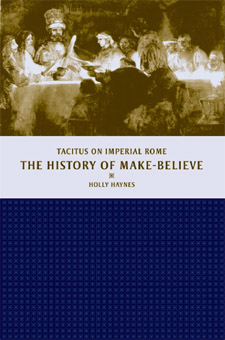 | Title: The history of make-believe: Tacitus on imperial Rome Author: Haynes, Holly Published: University of California Press, 2003 Subjects: Classics | Classical History | Classical Literature and Language | Political Theory | Ancient History Publisher's Description: A theoretically sophisticated and illuminating reading of Tacitus, especially the Histories , this work points to a new understanding of the logic of Roman rule during the early Empire. Tacitus, in Holly Haynes' analysis, does not write about the reality of imperial politics and culture but about the imaginary picture that imperial society makes of these concrete conditions of existence - the "making up and believing" that figure in both the subjective shaping of reality and the objective interpretation of it. Haynes traces Tacitus's development of this fingere/credere dynamic both backward and forward from the crucial year A.D. 69. Using recent theories of ideology, especially within the Marxist and psychoanalytic traditions, she exposes the psychic logic lurking behind the actions and inaction of the protagonists of the Histories . Her work demonstrates how Tacitus offers penetrating insights into the conditions of historical knowledge and into the psychic logic of power and its vicissitudes, from Augustus through the Flavians. By clarifying an explicit acknowledgment of the difficult relationship between res and verba, in the Histories, Haynes shows how Tacitus calls into question the possibility of objective knowing - how he may in fact be the first to allow readers to separate the objectively knowable from the objectively unknowable. Thus, Tacitus appears here as going further toward identifying the object of historical inquiry - and hence toward an "objective" rendering of history - than most historians before or since. [brief] Similar Items |
| 14. | 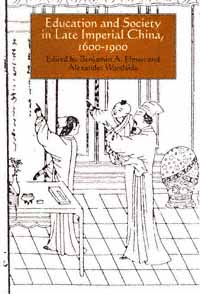 | Title: Education and society in late imperial China, 1600-1900 Author: Elman, Benjamin A 1946- Published: University of California Press, 1994 Subjects: History | Asian History | China Publisher's Description: This comprehensive volume integrates the history of late imperial China with the history of education over three centuries, revealing the significance of education in Chinese social, political, and intellectual life. A collaboration between social and intellectual historians, these fifteen essays pr . . . [more] Similar Items |
| 15. | 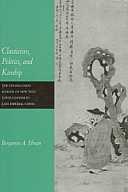 | Title: Classicism, politics, and kinship: the Chʿang-chou school of new text Confucianism in late imperial China Author: Elman, Benjamin A 1946- Published: University of California Press, 1990 Subjects: History | China | Philosophy Publisher's Description: Scholars have generally agreed that the story of New Text Confucianism in late imperial China centers on K'ang Yu-wei and the late nineteenth-century political reforms he took credit for after fleeing China in 1898. In this important new book, Benjamin Elman explores the roots of New Text ideas and shows that Confucians first dissented from the orthodox raison d'etre of the imperial state over three hundred years earlier, during the transition from the late Ming to early Ch'ing dynasties.New Text scholars, although not revolutionary, stood for new forms of belief, and they challenged the authenticity of classical sources upon which much orthodox political discourse had been based. Their notions of historical change proved to be important stepping stones toward an influential New Text vision of social and political transformation that climaxed in the 1898 reform movement.Elman examines the conflicting New Text versus Old Text portraits of Confucius in order to gain a more precise grasp of classical studies in imperial China as the ideological source for the "constitutionality" of the Confucian imperium. Central to his argument is the discovery that kinship organizations in pre-modern China played an important role in fostering schools of learning such as the Ch'ang-chou New Text school. Accordingly, this study affords us a unique perspective on how gentry sought to impose their agenda on the state in an effort to weather the great changes occurring during the Ming and Ch'ing dynasties. [brief] Similar Items |
| 16. | 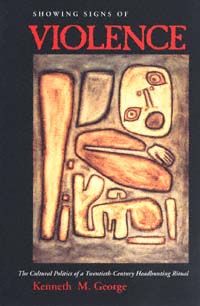 | Title: Showing signs of violence: the cultural politics of a twentieth-century headhunting ritual Author: George, Kenneth M 1950- Published: University of California Press, 1996 Subjects: Anthropology | Cultural Anthropology | Southeast Asia Publisher's Description: Showing Signs of Violence deals with the ceremonies of pangngae, a mock headhunt that lingers stubbornly at the center of political life in a marginal upland community in Sulawesi, Indonesia. No killing takes place in this ritual - no actual heads are taken - but its rhetoric of violence is unmistakable and real.Kenneth M. George vividly details the rites of pangngae, from the headhunters' secret and predatory journey downriver to the week of public festivity that follows their exuberant return. He puts special emphasis on the songs, speeches, and liturgies of the headhunt and shows how this ritual is neither a relic form of primitive violence nor an obsolete discourse on the social horizons of a remote community. In fact, the themes, purposes, and circumstances of pangngae make it the most public and community-defining form of ceremonial violence for this small mountain enclave as it confronts the dilemmas presented by Indonesian modernity and state culture. [brief] Similar Items |
| 17. | 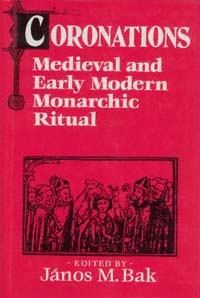 | Title: Coronations: medieval and early modern monarchic ritual Author: Bak, János M Published: University of California Press, 1990 Subjects: History | Medieval History Publisher's Description: Fascination with royal pomp and circumstance is as old as kingship itself. The authors of Coronations examine royal ceremonies from the ninth to the sixteenth century, and find the very essence of the monarchical state in its public presentation of itself. This book is an enlightened response to the revived interest in political history, written from a perspective that cultural historians will also enjoy. The symbolic and ritual acts that served to represent and legitimate monarchical power in medieval and early modern Europe include not only royal and papal coronations but also festive entries, inaugural feasts, and rulers' funerals.Fifteen leading scholars from North America, Britain, France, Germany, Poland, and Denmark explore the forms and the underlying meanings of such events, as well as problems of relevant scholarship on these subjects. All the contributions demonstrate the importance of in-depth study of rulership for the understanding of premodern power structures. Emphasis is placed on interdisciplinary approaches, drawing on the findings of ethnography and anthropology, combined with rigorous critical evaluation of the written and iconic evidence. The editor's historiographical introduction surveys the past and present of this field of study and proposes some new lines of inquiry. "For 'reality' is not a one-dimensional matter: even if we can establish what actually transpired, we still need to ask how it was perceived by those present." [brief] Similar Items |
| 18. | 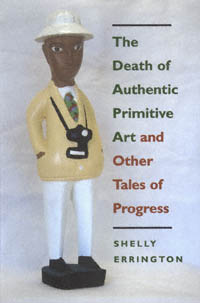 | Title: The death of authentic primitive art and other tales of progress Author: Errington, Shelly 1944- Published: University of California Press, 1998 Subjects: Anthropology | Cultural Anthropology | Art History | Architectural History | Art Theory Publisher's Description: In this lucid, witty, and forceful book, Shelly Errington argues that Primitive Art was invented as a new type of art object at the beginning of the twentieth century but that now, at the century's end, it has died a double but contradictory death. Authenticity and primitivism, both attacked by cultural critics, have died as concepts. At the same time, the penetration of nation-states, the tourist industry, and transnational corporations into regions that formerly produced these artifacts has severely reduced supplies of "primitive art," bringing about a second "death."Errington argues that the construction of the primitive in the nineteenth and twentieth centuries (and the kinds of objects chosen to exemplify it) must be understood as a product of discourses of progress - from the nineteenth-century European narrative of technological progress, to the twentieth-century narrative of modernism, to the late- twentieth-century narrative of the triumph of the free market. In Part One she charts a provocative argument ranging through the worlds of museums, art theorists, mail-order catalogs, boutiques, tourism, and world events, tracing a loosely historical account of the transformations of meanings of primitive art in this century. In Part Two she explores an eclectic collection of public sites in Mexico and Indonesia - a national museum of anthropology, a cultural theme park, an airport, and a ninth-century Buddhist monument (newly refurbished) - to show how the idea of the primitive can be used in the interests of promoting nationalism and economic development.Errington's dissection of discourses about progress and primitivism in the contemporary world is both a lively introduction to anthropological studies of art institutions and a dramatic new contribution to the growing field of cultural studies. [brief] Similar Items |
| 19. | 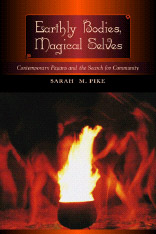 | Title: Earthly bodies, magical selves: contemporary pagans and the search for community Author: Pike, Sarah M 1959- Published: University of California Press, 2001 Subjects: Religion | Anthropology Publisher's Description: Recent decades have seen a revival of paganism, and every summer people gather across the United States to celebrate this increasingly popular religion. Sarah Pike's engrossing ethnography is the outcome of five years attending neo-pagan festivals, interviewing participants, and sometimes taking part in their ceremonies. Earthly Bodies, Magical Selves incorporates her personal experience and insightful scholarly work concerning ritual, sacred space, self-identity, and narrative. The result is a compelling portrait of this frequently misunderstood religious movement. Neo-paganism began emerging as a new religious movement in the late 1960s. In addition to bringing together followers for self-exploration and participation in group rituals, festivals might offer workshops on subjects such as astrology, tarot, mythology, herbal lore, and African drumming. But while they provide a sense of community for followers, Neo-Pagan festivals often provoke criticism from a variety of sources - among them conservative Christians, Native Americans, New Age spokespersons, and media representatives covering stories of rumored "Satanism" or "witchcraft." Earthly Bodies, Magical Selves explores larger issues in the United States regarding the postmodern self, utopian communities, cultural improvisation, and contemporary spirituality. Pike's accessible writing style and her nonsensationalistic approach do much to demystify neo-paganism and its followers. [brief] Similar Items |
| 20. | 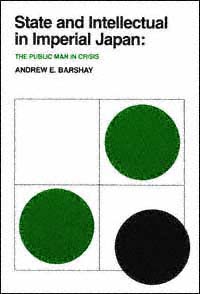 | Title: State and intellectual in imperial Japan: the public man in crisis Author: Barshay, Andrew E Published: University of California Press, 1991 Subjects: History | Asian History | Japan | Intellectual History Publisher's Description: In this superbly written and eminently readable narrative, Andrew E. Barshay presents the contrasting lives of Nanbara Shigeru (1889-1974) and Hasegawa Nyoze-kan (1875-1969), illuminating the complex predicament of modern Japanese intellectuals and their relation to state and society.Following the Meiji Restoration of 1868, a powerful modern state began to emerge in Japan, and with it, the idea of a "public" sphere of action. This sphere brought with it a new type of intellectual - a "public man" whose role was to interpret and nationalize "universal" (and largely foreign) ideas and ideologies.Activity within the public sphere took many forms as Japanese intellectuals sought to define their changing roles. At no time was such public activity as intense as during the crisis years of later imperial and early postwar Japan. In contrasting case studies, Andrew E. Barshay presents the lives of two modern Japanese intellectuals, Nanbara Shigeru (1889-1974), professor of Western political thought at Tokyo Imperial University, and Hasegawa Nyozekan (1875-1969), a versatile independent journalist. Through their writings and experiences, Barshay examines the power of the idea of "national community" in public life. He treats Nanbara's and Hasegawa's ideas and actions as they developed within the contexts of Western intellectual tradition and modern Japanese history. The result is a superbly written narrative that illuminates the complex predicament of modern Japanese intellectuals and their relation to the state and society. Barshay's work is ultimately a study of intellectual mobilization in a modern state, and of the price of national identity in the twentieth century. [brief] Similar Items |